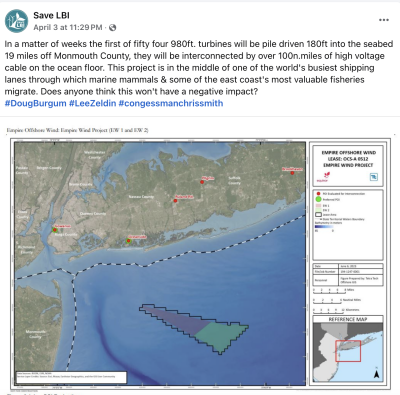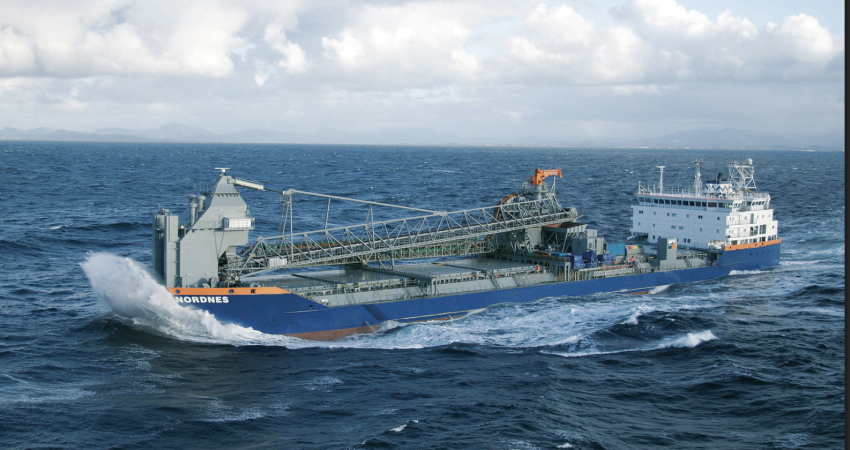Groups opposed to offshore wind projects are pushing the Trump administration to strike against Empire Wind, one of the earliest projects proposed in U.S. waters, now poised to begin construction.
On a federal lease of 80,000 acres tucked between shipping lanes for New York Harbor, developer Equinor plans a first phase of 54 wind turbines to deliver 810 megawatts of power into Brooklyn and the New York City power grid. A second future phase could develop another 1,260 MW of generation.
In a March 24 notice to mariners, Equinor said Netherlands-based contractor Van Oord would begin subsea rock installation on seabed sites around planned turbine locations to provide stable bases and protection against erosion. The work will be conducted with the Nordnes, a Netherlands-flagged 547’x86’ flexible fallpipe bulk carrier with a capacity of 24,000 metric tons.
Van Oord says the plan is to place rock in a radius of 20 meters (about 66’) around each turbine foundation site. On April 4, vessel tracking services reported the Nordnes in the Ambrose anchorage off New York.
Opposition groups stepped up their lobbying of the Trump administration and campaigning on social media, pushing for dramatic action based on President Donald Trump’s Jan. 20 order to review offshore wind projects.

With five projects proceeding in Northeast and Mid-Atlantic waters, opponents are probing for regulatory and legal avenues for attacking the developers’ federal permits.
In a March 26 letter to Secretary of the Interior Doug Burgum, Rep. Chris Smith, R-NJ, protested that Equinor is proceeding with “defiant plans of wind turbine developer Equinor to begin construction on an offshore wind project off the coast of New Jersey and New York despite President Trump’s” Jan. 20 order demanding new project reviews.
“This announcement comes despite President Trump’s order which specifically references the need to examine shortcomings in the approval process for offshore wind, including potential inadequacies in various environmental reviews,” Smith. Smith said Equinor “is trying to push through its questionable project based on the rubber-stamp approval received from the Biden administration.”
The Trump administration’s opposition is a sharp reversal from Trump’s first term, when Equinor was awarded its lease for $135 million in December 2016. Promoted by then-Interior Secretary Ryan Zinke, the East Coast wind auction was trumpeted by an agency press release: “BIDDING BONANZA! Trump Administration Smashes Record for Offshore Wind Auction with $405 Million in Winning Bids.”
“To anyone who doubted that our ambitious vision for energy dominance would not include renewables, today we put that rumor to rest,” Zinke said then. “With bold leadership, faster, streamlined environmental reviews, and a lot of hard work with our states and fishermen, we’ve given the wind industry the confidence to think and bid big.”
By spring 2018, it was apparent that the Bureau of Ocean Energy Management and wind developers would press on in the New York Bight – despite misgivings among the region’s veteran mariners and fishermen. At SUNY Maritime College in New York City, the school’s bridge simulator used to train cadets already included video scenarios to illustrate what it would be like navigating with Empire Wind at close quarters.







